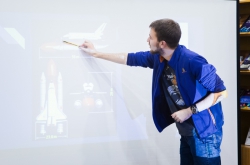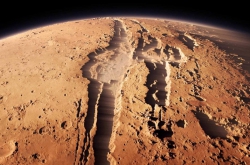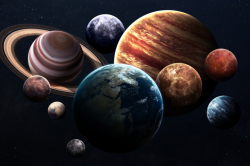Who’s faster?
Launching speed is one of the most important parameters in cosmonautics. It denotes the period of time spent between the launch of two rockets and can be measured on the basis of the number of rockets launched either from one firing pad or from all firing pads present at a launching site. Sergei Korolev had six firing pads, Elon Musk has three. Korolev’s peak launching speed was one day per one firing pad. Now it takes at least three days for Roscosmos to fully prepare for the launch of one R-7 rocket: the first day is spent on setting-up and various adjustments, second is the margin day, and the third day is marked for rocket refuel and last-minute check-ups. Musk needs at least 12 days to prepare for the launch.
It took time for Korolev to shape the R-7 rocket as we know it today: it went through almost 10 design modifications in the period of 10 years. Things didn’t go as smoothly, but we have to give the early Soviet spacecraft designers some credit: as early as at the outset of the space era, they managed to launch the first Earth’s satellite, send animals and humans into space, and create a viable space laboratory, as well as the Moon and Venus planetary rovers. Musk first attempted to launch a rocket into space in 2006. His first successful launch took place in 2008. For the time being, there’s been only two Falcon modifications. But over these 10 years, Musk has accomplished many other goals: he not only developed and led into completion his project on returning used rocket stages, but also sent his Tesla to Mars, and I applaud him for that. I’ve always disliked it how rocket testers use ancient rusty satellites or just plain metal sheets when carrying out tests. Musk, however, has managed to turn a simple rocket trial into a show. Soviet cosmonautics lacked this extravaganza.

Whose idea was it, anyway?
Elon Musk’s approach to cosmonautics is not exactly groundbreaking. Take his idea of launching his Big Falcon Rocket from one Atlantic ocean shore to another in 15 minutes. This was initially suggested by an early 20th-century Austrian physicist Max Valier some time before his tragic death caused by the explosion of one of his own engines. Max Valier did research of rocket-powered vehicles and solid-state engines, but then he realized that these old technologies would lead science nowhere. So he moved to exploring new areas like liquid-fueled engines, petrol vapors, and processes of combustion.
The concept of reusing spacecraft equipment also appeared long before Musk started his space research. In the early stages, rockets were created for military use; their only purpose was to reach the adversary and then blow up, so rocket reusability wasn’t the spacecraft designers’ main concern. Reusable systems were first featured on a transporting spacecraft that delivered cargos to “Almaz”, a Soviet piloted space station. There was also a project of a reusable space transportation system called “Energia”; it had a parachute system, a soft landing engine and landing legs but sadly was never actually completed. Russian spacecraft designers are currently working on a reusable first-stage booster for “Baikal-Angara” carrier rocket.

Why rocket stages recovery systems were conceptualized, but never implemented in Korolev’s time? All the rocket launch parameters were calculated prior to the actual launch, and all the calculations were made with the simplest of all calculators and a slide-ruler. It was only with the emergence of the computer processing units that spacecraft designers started developing flight calculation systems which could have been readjusted in real-time, allowing for a better control of the engines.
Elon Musk undoubtedly is a trailblazer in many areas. He’s not afraid of pursuing projects that everyone considers to be unprofitable and with no real chance of success. One example of this is his never-ending quest for reusable rockets. Although it works against him by dragging down the productivity and profits of his enterprise, he clearly won’t rest until he fulfills his rocket reusability goal.

Which questions are left to be solved before we boldly go to where no one has gone before?
Nevertheless, there are many space-related questions which Musk fails to address. First and foremost, how do people actually survive in space? Russia and China try to answer this by carrying out experiments on human capacity to survive in confined biosystems, but these experiments were first conducted in 60’s and 70’s with Korolev’s backing. They included placing people in a closed-off environment with so much as a greenhouse, a power reserve, a storage compartment and living unit at their disposal. There’s also been a recent Russian “Mars 500” research project on whether humans can survive a piloted turnaround flight to Mars. But all that didn’t tackle the social and psychological factors that are crucial to human welfare in closed spaces during long-haul flights.
Another key aspect of sending humans to Mars is radiation security. Earth has a magnetic field that protects its inhabitants from space radiation. But as soon as humans go into space, they are exposed to highly damaging cosmic rays. One of the main arguments of those who don’t believe that Americans have been to the Moon is that the astronauts would have been exposed to such a huge dose of radiation that they would die of radiation poisoning before reaching the Earth. But the reality is that although they were exposed to radiation, its dose was within the humans’ survival range. All ISS (International Space Station) crew members experience considerable amounts of radiation, hence why they aren’t allowed to participate in another space expedition in a year after their first flight. But the radiation dosage is completely tolerable and is subject to ongoing research and experiments.

There are other dilemmas, too. How can a large object enter the atmosphere at the first cosmic velocity? How are humans supposed to feed themselves in space? ISS cosmonauts are trying to grow plants in space, but numerous experiments have established that unlike plants which grew out of seeds that had been brought from Earth, space-grown plants don’t produce crops. There’s also a question of whether a rocket can repeat its flight from Mars to Earth. The problem is that after its first use the rocket sustains so much damage that it needs to go through considerable maintenance before it can be flown back to Earth. But how will we fix rockets on Mars? Musk is too busy with his other ventures to give these issues some thought. He’ll also need to factor in the inevitable red tape hurdles as it takes a lot of time to gather all the documents needed for organizing a certified space flight. There is a whole load of problems Elon Musk will have to solve before he fulfills his dream of sending a human expedition to Mars.




